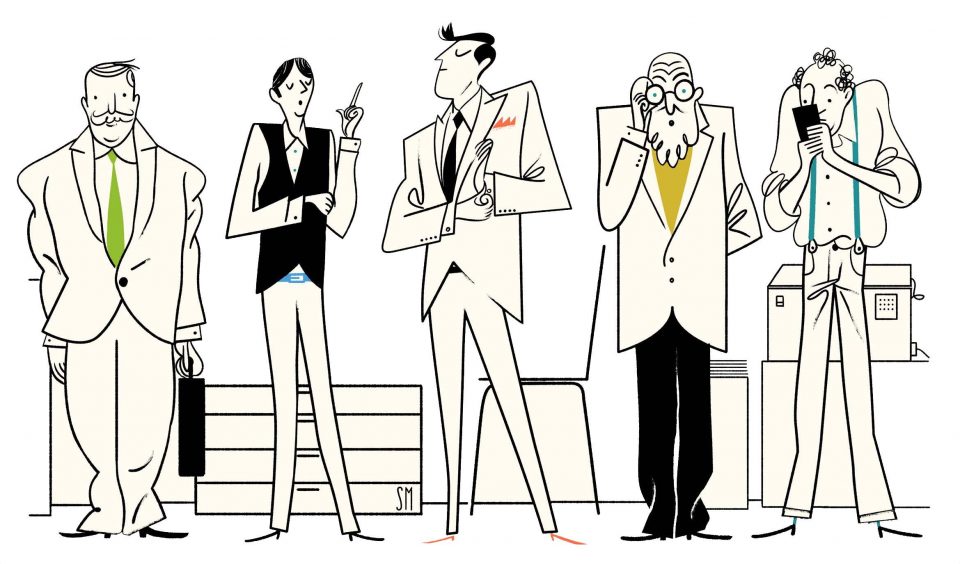To Instantly Boost Your Confidence
Stop reading for a moment, and notice how you are sitting or standing. Where are your arms? What is the expression on your face? If someone were to walk in the room right now, what preconceptions might they make about you simply based on your body language?
If you don’t think your body has a language of its own, think again. A large percentage of communication and how people perceive you comes from body language. This includes posture, gestures, facial expressions, and eye movements. Your body language might reveal your true feelings or intentions or self-confidence.
Perhaps you feel tired, angry, bored, frustrated, or enthusiastic, but some of these might not be feelings you want to communicate in a given situation. Do you really want your boss to read your body language that shows you are bored with his speech is making skills?
Body Language and Self-Confidence
Understanding and managing body language boosts your confidence in two ways.
First, by managing your body language and sending appropriate signals in specific situations, you receive positive feedback and feel assured you aren’t sabotaging your own success or the perceptions of others.
More importantly, when you practice powerful, positive body language, you’re sending messages to your brain to reinforce positive, confident feelings. Confident body language actually makes you feel more confident and appear more confident to others.
Here are 10 confident body language tips to boost your confidence:
- Practice smiling
- Pay attention to posture
- Boost Your Confidence Daily
- Use power poses
- Use engaged body language
- Remember your arms and legs
- Have a strong handshake
- Dress for confidence
- Stop fidgeting
- Practice appropriate eye contact
1. Practice smiling.
Smiling not only makes you more attractive and trustworthy, it also improves your health, your stress level, and your feelings about yourself. Smiling slows the heart and relaxes the body, and it releases endorphins that counteract and diminish stress hormones. It also has been shown to increase productivity while performing tasks.
According to several studies, smiling can trick your brain into feeling happy, even when you feel sad as you’re smiling.
Action Steps: When you wake up in the morning, stand in front of your mirror and smile at yourself. Yes, you will feel foolish, but practice smiling to yourself for a minute or two. When you’re in your car or alone at your desk, practice smiling. Be aware of the impact smiling has on other people, and remind yourself to smile more often with others.
2. Pay attention to posture.
You practice good posture when your position sitting or standing creates the least amount of strain on supporting muscles and ligaments. When you sit, your back is straight, your rear is against the back of the chair, your feet are flat on the floor, and you bend your knees at a right angle.
When standing you should be able to draw an imaginary straight line from your earlobe through your shoulder, hip, knee and the middle of your ankle. Good posture is essential for avoiding back and neck pain, prevent muscle aches and keeping your bones and joints in proper alignment.
3. Boost Your Confidence Daily
Low confidence might be holding you back or infecting your relationships or work performance.
Look at yourself in the mirror and make adjustments so you feel the proper alignment of your body. Wear a rubber band on your wrist or some other physical reminder to stand or sit up straight.
Action Steps : Ask a family member to notice your posture and comment when it’s bad. When you enter a room of people or a meeting, correct your posture before you walk in the room.
4. Use power poses.

Social psychologist Amy Cuddy revealed in her 2012 TED talk that standing or sitting with certain poses for as little two minutes raises testosterone levels and lowers cortisol (the stress hormone).
These poses can impact your performance, as well as your success at work, with clients, and in your relationships. Many of the poses involve opening your body and taking up space, making you feel more confident and powerful.
Action Steps: Select two or three poses that you might practice by yourself and in professional situations when you want to appear and feel powerful. Practice doing these poses every day for a few weeks until they feel natural.
5. Use engaged body language.
If you want to reach an agreement, win the girl, persuade someone to your side of things, engaged body language gives you more confidence and sends powerful messages to others to win them over.
Engaged body language involves using open gestures, smiling and nodding, and mirroring the expressions and movements of the other person. Once you’ve reached your goal, seal the deal by offering a firm handshake, saying “thank you”, and using good posture.
Action Steps: Think about upcoming situations in which you want to reach an agreement or win someone over. Practice the encounter beforehand using confident body language.
6. Remember your arms and legs.
Crossing your arms suggests you feel defensive, self-protective, and closed off. Crossing your legs away from another person can suggest you dislike them or feel discomfort. Crossing your ankles can signal you’re holding something back and not expressing it (unless you’re a woman who was taught to do this as a “ladylike” position). If you clasp your hands behind your back, you might be saying you feel bored, anxious, or even angry. Hands clasped and crossed over the genitals is a self-comfort gesture that reveals vulnerability or shyness. Tapping your fingers and fidgeting tells others you are bored, impatient, or frustrated.

Action Steps: Begin to pay attention to what you do with your arms and legs in certain situations. Notice how you are feeling when your arms and/or legs are crossed. What is the other person saying or doing, and why might you feel defensive or closed off? Begin to change the position of your arms and legs. Put your hands in your lap when sitting and by your side when standing. Crossing your legs at the knee for comfort is fine, as long as it’s not combined with crossed arms.
7. Have a strong handshake.
A firm, solid handshake is a universal sign of confidence, and everyone, including women, should have one. A handshake should be strong, but not crushing, offered with a cool dry hand and a few up and down shakes, as well as a few seconds of eye contact. It is a sign of mutual respect from both parties and makes a great first impression. A sweaty, limp, “dead fish” handshake has the opposite effect. Whether or not you feel confident, a firm handshake will boost your feelings and make others see you as more confident.
Action Steps: Ask several people you trust to assess your handshake. Have them make note of your grip, the feeling of your palms, whether you pump their hand appropriately, and if you make eye contact. Make note of their feedback, and practice your revised handshake with people you don’t know.
8. Dress for confidence.
Clothes do make a difference in how we perceive ourselves, and how others perceive us. Dressing confidently is more than wearing the trendiest fashion. It’s about feeling good, looking poised and being self-assured and having confident posture in all situations. It’s also about sending the right message to the people you are with. You can boost your confidence in yourself and your attire when you dress appropriately for the occasion, know the audience, reflect your personal style, and understand the impact of color.
Action Steps: Does your wardrobe add to your confidence or diminish it? Do you often find yourself in sloppy clothing or not dressed appropriately for the situation? Dressing well will add to your confidence, even when you are feeling down.
Determine your personal style by looking at magazines or blogs to see what you like. Learn about the impact of wearing certain colors by reading this article. If necessary, purchase a few classic pieces to add to your wardrobe that makes you feel confident and powerful.
9. Stop fidgeting.
Over 500 managers surveyed a workforce solutions company, said that one-fifth of the candidates they’ve rejected for a position were fidgeters. They felt it betrayed a lack of confidence and a lack of preparation for the interview.
Fidgeting, like twirling your hair, shaking your foot, or biting your nails, is an obvious sign of anxiety and nervous body language. These nervous movements draw attention away from what you’re saying and distract people from your message.
Avoid touching your face or neck which also indicates you feel anxious. Fidgeting sends the message loud and clear that you aren’t self-assured.
Action Steps: Do you have some regular fidgeting habits? Have others commented on these behaviors in the past? Start to pay attention to how you fidget and what triggers these actions. Think about what you can do to replace this nervous body language when you encounter the trigger. You could hold your hands in your lap, use your hands to gesticulate when you speak or hold a pen and pad. If you shake your foot or knee, place both feet flat on the floor. When you feel the urge to fidget and have nervous energy, take a few deep, calming breaths.
10. Practice appropriate eye contact.
Eye contact suggests you’re truthful, engaging, and approachable. Confident eyes impart a sense of intimacy in your interactions and make the other person feel more positive and connected to you. However, too much eye contact can send the signal you’re aggressive or maybe even a little strange. When eye contact goes from gazing to staring, it makes people uncomfortable and actually activates their sympathetic nervous system. The Power of Eye Contact: Your Secret for Success in Business, Love, and Life, “In order for eye contact to feel good, one person cannot impose his visual will on another; it is a shared experience.”
Action Steps: If you feel uncomfortable making eye contact, start to get comfortable by practicing with family and friends. Look them in the eye for about 50–60 percent of the conversation ideally.
When you break eye contact, look to the side rather than down. Looking down signals lower-status, shame, and/or submission. As you get more confident with eye contact with family and friends, practice it with people at work or out in public.

The article is contributed by Kasiviswanathan Palanisamy | Board of Director, Picanol India. An eminent Speaker, Business Head, Whole Time Director, Team Motivator, and article Writer, Having total 30 years’ experience in Indian Textile industry being deeply involved in the spinning, weaving and processing industry. He has thorough knowledge of almost all supply sources of textile machinery.
Associated with selling of world class imported spinning, weaving and processing machines in India. Well-known in Indian textile industry and positioned in Delhi for last 25 years. Associated with Picanol Group for the last 26 years. Since 2008 Head of Picanol India followed by elevating to Executive Director focusing on sales of Picanol weaving machines,.




